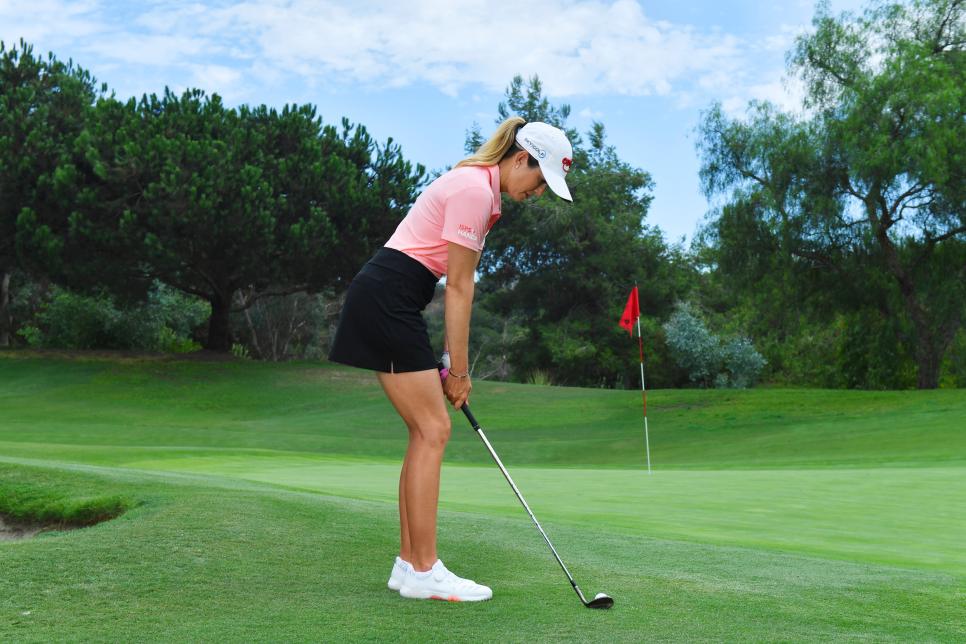Instruction
Practicing while you play works (and it saves time)
.jpg.rend.hgtvcom.966.644.suffix/1578581827441.jpeg)
Donald Miralle
I've changed literally everything about my game over the past few years— how I putt, how I chip, what I do in bunkers, my full swing. It’s not just placing band-aids on things, these are real changes. And it’s been a lot of work. Because this is my job, I can afford to spend a lot of time on the range and in the short-game area. But I realize you probably don’t have that luxury. So what can you do? Try practicing while you play. It’s a great way to get the reps in when you don’t have any other time for practice, and another benefit is that the things you work on are still fresh in your mind when it’s time to swing for real. I’m doing a lot more on-course practice (drills and swing thoughts), too, and I’d like to pass some of those ideas on to you. Save your practice-range money.
PAUSE YOUR DRIVER
When you're feeling pressure to drive the ball into the fairway, it’s natural to feel anxious or excited. When that happens to me, I have a tendency to get a little quick with my transition from backswing to downswing. It’s a pretty common reaction and usually happens when you want to hit it harder. But rushing will screw up your timing. To help keep that from happening, I’ll make some practice swings where purposely pause at the top for two seconds (above) before starting the downswing. It helps override my anxiousness, and it doesn’t make my downswing any slower. It just helps ensure I finish the backswing, so everything stays in sync.
WIDEN YOUR IRON SWING

Donald Miralle
An on-course drill that I love when my iron play is off is to have my caddie stand safely behind my ball on the target line. When I start the takeaway, I swing the clubhead toward him while keeping the clubface looking at the ball for as long as I can (above).
I have a tendency to get the club too far behind me on the way back, which can lead to all sorts of challenges on the way down. This drill helps me square the face easier at impact. It adds more width, too, which will help you get more distance. You can do this drill as much as you want during the round. Just remember that when it’s time to take your stance to hit the ball, your caddie can’t be behind you on your target line (Rule 10.2). Some pros have been dinged two shots for that in the past year.
CHIPS: SET THE HANDLE

Donald Miralle
My go-to thought when chipping is, Check the handle.
If it’s not set for the type of shot I want to hit, my contact might be poor. For example, lowering your hands (above) adds loft to the shot. And raising the shaft so it’s more vertical is going to help you hit a bump-and-run type of chip. I find that higher-shaft technique more forgiving and needs less practice. The club just glides along the ground. Try a few while you’re waiting to tee off to get a feel for it. —WITH KEELY LEVINS